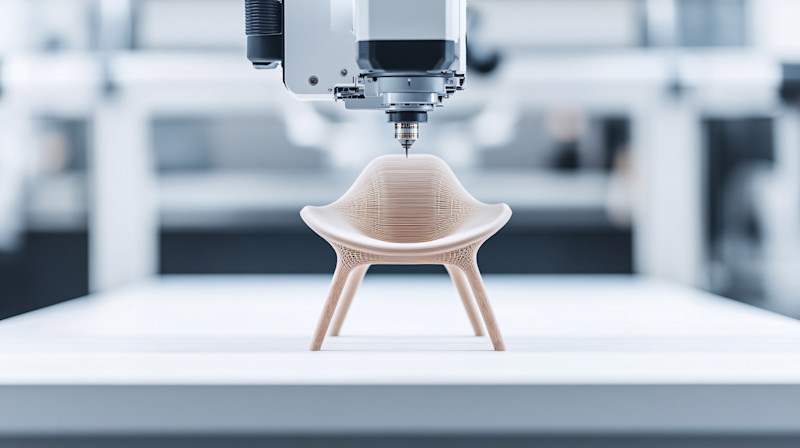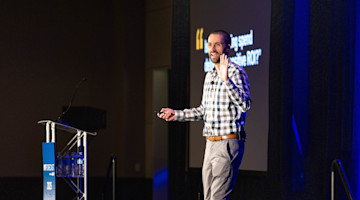“I’m not superstitious, but I am a little stitious.”
- Michael Gary Scott, Scranton Regional Manager, Dunder Mifflin
This is a published version of the AMT Tech Report newsletter. You can sign up to get the Tech Report in your inbox here.
1. Florida Man Runs World’s Largest 3DP Factory
Haddy opened the world’s largest 3D printing microfactory in St. Petersburg, Florida, on April 10. Founder Jay Rogers and his team of eight AI-driven robots are 3D printing furniture and products from recycled materials, proving nearby, sustainable manufacturing isn’t a fantasy – it’s scalable, smart, and happening now. It’s also a bold reminder: The future of manufacturing isn’t just about national scale – it’s about local capability driven by innovation and proximity.
2. Algorithm Shrinks AI Models, Grows Brains
ETH Zurich researchers developed SIFT, an algorithm that feeds large language models the right data to sharpen accuracy without ballooning compute demands. By picking complementary info (not just more of the same) based on vector angles, SIFT delivers smarter AI, fewer hallucinations, and models up to 40 times smaller. Bonus: It shows clean, well-curated data, which isn't optional – it’s critical to getting real results.
3. Amazon’s Robot Symphony Hits a New High Note
At Amazon, 75% of packages now move through a high-tech ballet of humans and robots, thanks to what they call “Physical AI.” Their newest fulfillment centers offload the menial grind to smarter, nimbler bots and are now running 25% faster with 30% fewer safety incidents. Amazon isn’t just automating – it’s orchestrating, showing that, in logistics, human-robot collaboration isn’t the future; it’s already shipping.
4. Why ‘Made in USA’ Is Still a Heavy Lift
For manufacturers aiming for “100% Made in America,” the last 5% is the hardest – and priciest. As companies like Decked, Rapid Plastics, and CorVent Medical learned, some parts aren't made in the United States anymore – or not at competitive cost or scale. Haas Automation notes that industrial-scale cast iron production is no longer realistic here. While reshoring happens where it can, rebuilding complete supply chains takes more than good intentions – it takes time, investment, and a serious workforce revival.
5. AI Sharpens Supply Chain Strategy
Disruption is the new normal, but some manufacturers are staying ahead. In “From Chaos to Clarity: How AI and Data Help Manufacturers Navigate Tariff Disruptions,” an upcoming IMTS+ webinar presented by CADDi, subject matter experts will discuss how AI, predictive analytics, and live supply chain data can improve forecast accuracy, streamline collaboration, and mitigate disruption. They will highlight practical use cases, integration strategies, and performance benchmarks for intelligent and adaptive supply chains.
To get the latest tech developments delivered directly to your inbox, subscribe to the weekly Tech Report here.
To hear the latest in additive manufacturing, material removal, automation, and digital manufacturing, subscribe to the AMT Tech Trends podcast here.






